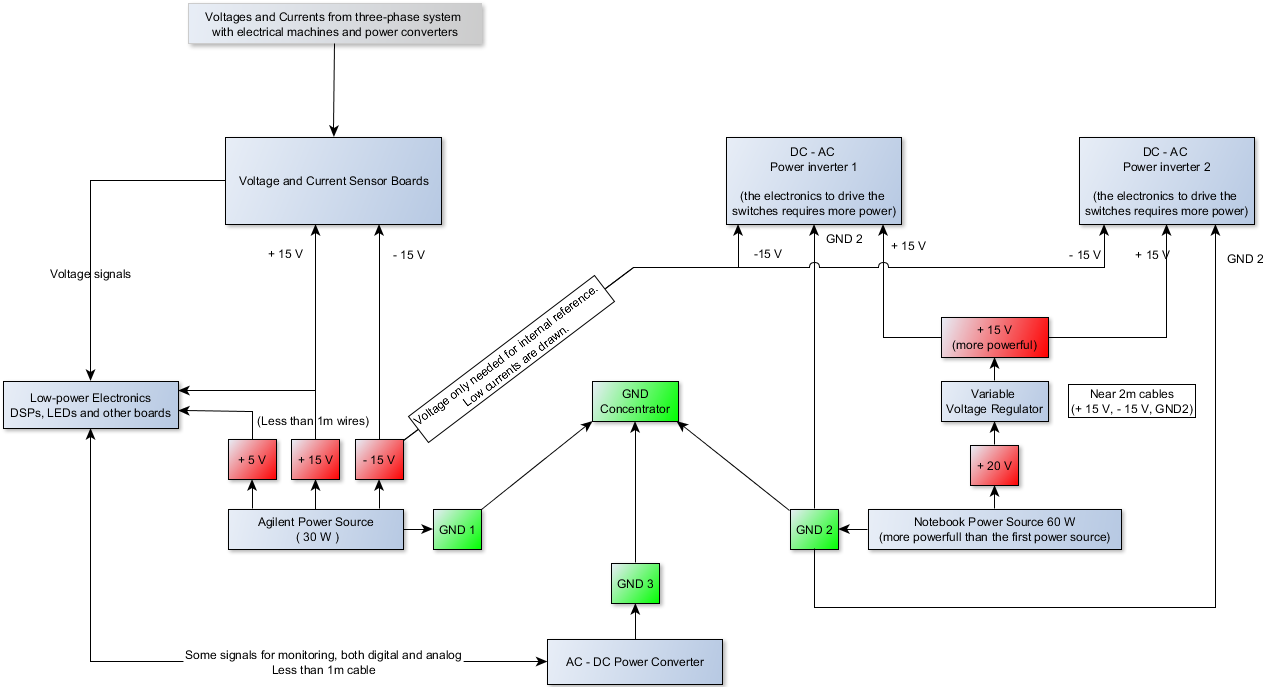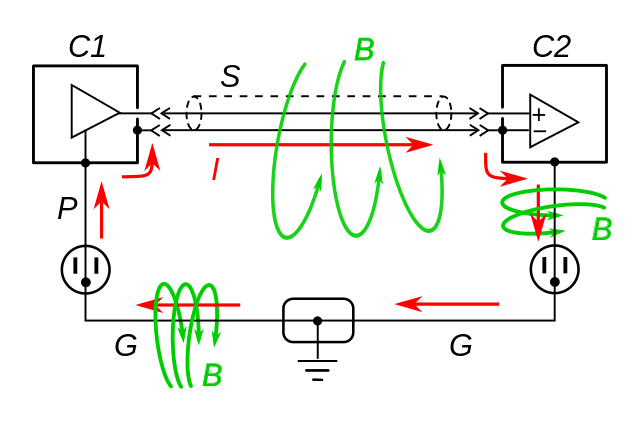I ask for help with a experimental assembly I am developing in the university, which is a small size power generation plant.
The system consists of a DC machine, a induction machine, several current and voltage sensors distributed in 4 boards, a AC-DC power converter to drive the DC machine, two power inverters configured as back-to-back and, of course, three DSPs, to control the whole system.
I sketched the diagram below trying to represent as close as possible the current physical assembly in the LAB. Turns out I am experiencing high levels of noise, voltage drops, reference divergences in several points, which is probably going to degrade the experiment.
My question is if you guys can help me with ideas to improve the system behavior regarding noise and references. Some considerations need to be made:
- I did not yet put the machines and the converters to work in full, they are only connected and the converters are powered on. Even like this, the system shows the aforementioned problems. I think when the machines and converters are working, it won't be pretty.
- All cables are NOT shielded, unfortunately. It is practically a standard of the devices that I own to use regular flat cables. I used, actually, CAT-6 twisted cables in some points, but not in the converters.
- As you can see in the sketch, the several boards and power sources need to be connect in the same referential, which may lead to ground loops. Should I connect them all to EARTH GROUND?
Thank you in advance for the help and the ideas.




